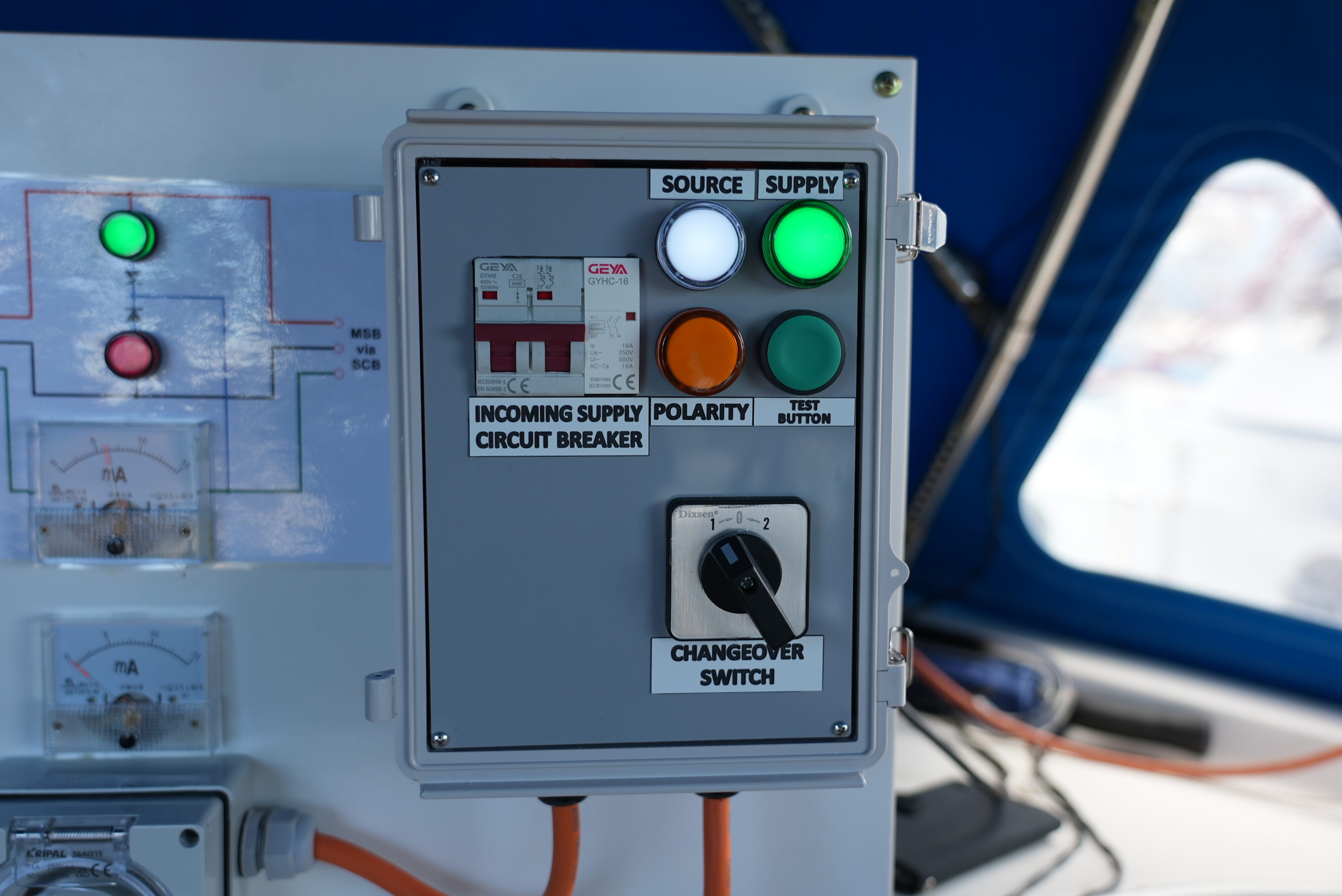
Can you afford the fines for non-compliance
By Mark Smith
CEng, CMarEng, FIMarEST, BAppSc(MarEng)
Engineering Surveyor
Accredited Marine Surveyor: AMSA – 3242-6148 4
Qld EC lic. 73995
eCMID – AVI00674
Based in Brisbane, Australia, Mark Smith is an AMSA Accredited Marine Surveyor and a Chartered Marine Engineer with over 40 years’ experience. Mark is a member of the Australasian Institute of Marine Surveyors, and Fellow of the Institute of Marine Engineering, Science and Technology (IMarEST). Mark is the owner of SET Maritime & Electrical, designer of the revolutionary new shore connection device – ESHORE.
If you have a ‘she’ll be right’ attitude when it comes to compliance, it’s time to rethink it!
With growing concerns around electrical safety on boats and shore connection devices not meeting compliance, now is the time to act.
What is compliance?
As a boat owner, you are responsible for your boat and everyone that boards it. The biggest concern of course is safety. There are a number of Standards and Legislation that set out your obligations and duty of care as the owner. You need to understand these and ensure your boat is compliant with them. Pleading ignorance just doesn’t cut it, so if you are not sure I’d recommend you do some reading.
What happens if I’m not compliant?
It’s a simple answer – you’ll cop a fine. Fines are based upon penalty units and the value of a penalty unit as of 1 July 2021, is $137.85.
That may not seem like a big hit, but consider the following examples (not an exhaustive list):
| Standards and Legislation | Details and fines |
| Transport Operations (Marine Safety) Act 1994 | There are various mechanisms in the Act to ensure safety, however the most relevant is the general safety obligation of ship owners and masters about the condition of boats: (1) The owner and master of a ship must not operate the ship unless the ship is safe. Maximum penalty – 500 penalty units ($6,892.50) or imprisonment for 1 year. (2) However, if the contravention of subsection (1) causes a marine incident involving the death of, or grievous bodily harm to, a person, the owner and master commit an indictable offence and are liable to a maximum penalty of 5,000 penalty units ($689,250.00) or imprisonment for 2 years. |
| Electrical Safety Act 2002 | In this Act to ensure safety, there is a section for enforceable undertakings, the most relevant being that: A category 2 offence, if the person’s failure to comply with an electrical safety duty results in the death of an individual.Person commits a category 2 offence if—(a) the person has an electrical safety duty; and(b) the person fails to comply with that duty; and(c) the failure exposes an individual to a risk of death or serious injury or illness Maximum penalty—Committed by an individual: 1,500 penalty units ($206,775.00)Offence committed by an individual as a person conducting a business: 3,000 penalty units ($413,550.00) |
| General Fines: | Conducting electrical work without a licenceOn the spot fine of $400 for an individualPerforming work without holding an electrical contractors licence attracts a $500 fine for an individual and $2000 for a business Failure to comply with a health and safety duty or electrical safety dutyIndividuals up to $50,000Business up to $500,000 |
What you need to do
I’m just talking about electrical safety here, but you need to ensure you are compliant across the board. Start by ensuring your electrician is qualified and knowledgeable about the relevant Standards and Legislation. You can also visit your local Maritime Safety pages and check out my other articles here.
Don’t be complacent – a little knowledge goes a long way to not only keeping you safe, but can save you a lot of money!